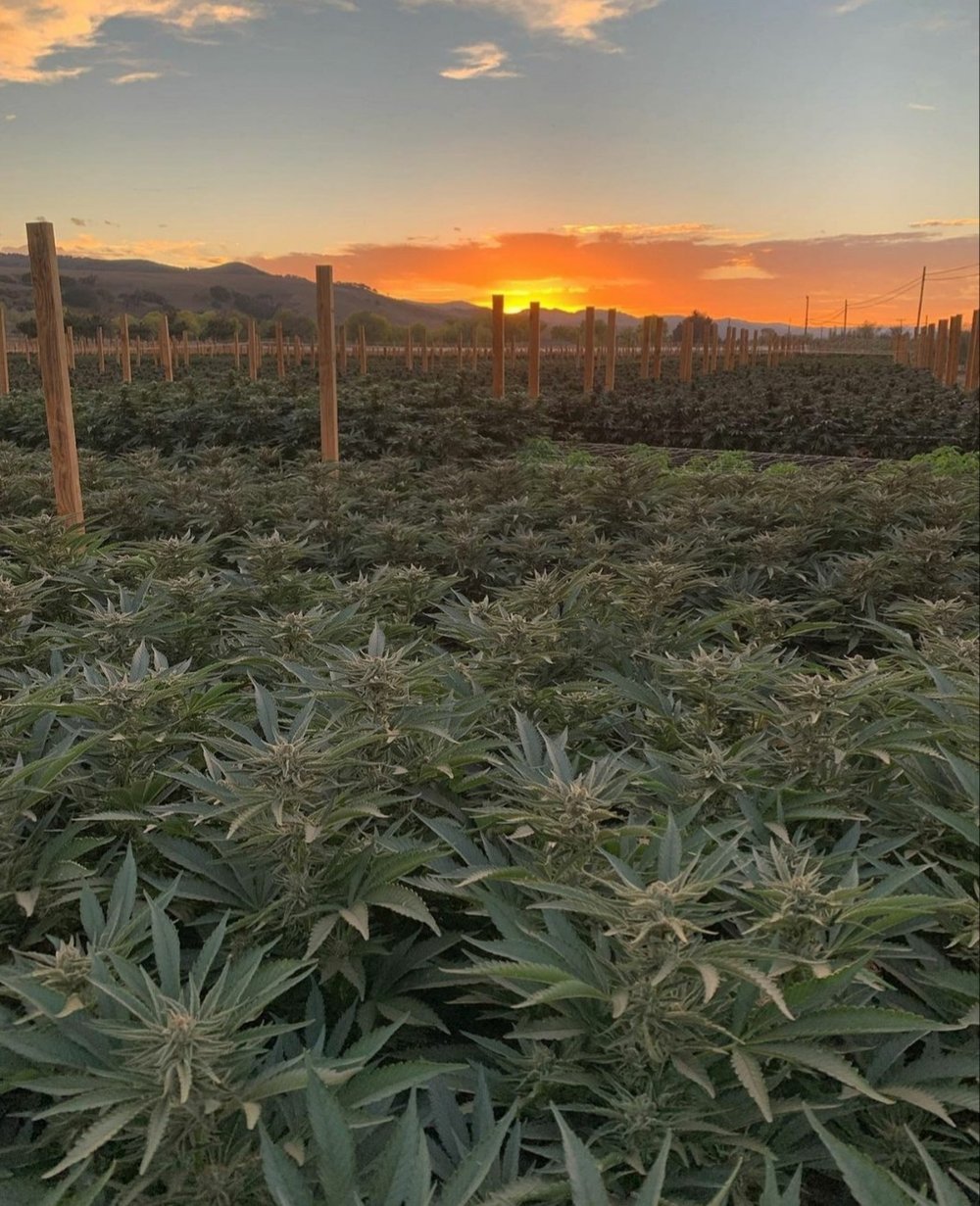
Our Method
By applying nature’s essentials: Sun, Water, Wind, and Soil we are able to grow some amazing genetics. We take pride in what we cultivate and distribute our products across California.
Our cannabis is naturally cultivated and we use what nature has given us. We take pride in our carbon footprint and we work consciously to minimize our footprint to delay climate change.
Energized by natural elements
Los Alamos climate is typically warm and dry in summer and cool and wet in winter, close to that of a Mediterranean-type climate. Many of the county's rivers, creeks, and streams remain full during the summer months.
Los Alamos is a near identical climate to what the cannabis plant needs. This environment allows the plant to thrive without having to fight features not beneficial to its development such as humidity, heat and insect pressure.
SOIL
Our plants live directly in natural soil. We do not use harmful pesticides and in order to create the most optimal cultivation environment we cultivate in elevated wood boxes. Some people call this “Humboldt Style.”
SUN
Our plants thrives in natural California sunlight. The combination with all the ecological elements provides our plants with the stimulation needed to maximize cannabinoid and terpene development.
WIND
The fresh Los Alamos valley and sometimes Santa Barbara coastal air has a positive unrivaled quality that nurtures our beautiful plants out in the field.
WATER
Los Alamos Gardens utilizes natural aquifer waters located underneath our farm. We have a state of the art well system that filters the water through charcoal filters and supplies the farm with the best quality natural ground water. We achieve zero-impact by replacing the water as it trickles down our soil and back to nature.
History
Our Farm Los Alamos Gardens was part of Rancho Los Alamos Mexican land grant. Rancho Los Álamos was a 48,803-acre (197.50 km2) Mexican Land Grant in present-day Santa Barbara County, California, given in 1839 by Governor Juan Alvarado to José Antonio de la Guerra, a son of Jose de la Guerra y Noriega Los Álamos is Spanish for "the cottonwoods" and describes Fremont’s Cottonwood trees lining the banks of the San Antonio Creek.
Los Alamos Gardens Main House
In 1839, during Mexico's rule of Alta California, José Antonio de la Guerra was granted title to Rancho Los Álamos in the Los Alamos Valley. Concepción Ortega, who married José de la Guerra, came to live at the adobe ranch house.
Los Alamos Ranch House A one story adobe ranch house established about 1840 and designated a National Historic Landmark in 1970.
With the cessions of California to the United States following the Mexican-American war the 1848 Treaty of Guadalupe Hidalgo provided that the land grants would be honored. As required by the Land Act of 1851, a claim for Rancho Los Álamos was filed with the Public Land Commission in 1852, and the land grant was patented to de la Guerra in 1872.
In 1876, San Fransisco financier Thomas Bell along with his son John S. Bell, and James B. Shaw, purchased acreage from Rancho Los Álamos and the neighboring Rancho La Laguna. Both families allocated a half square mile from each of their new ranches to create the Los Alamos town site with "Centennial Street" as the central thoroughfare.
The Bell
El Camino Real is Spanish for "The Royal Road" and in California is the name for the 700 mile historic California Mission Trail that connects 21 missions, 4 presidios (military forts) and several pueblos (towns) from Mission San Diego de Alcala in the south to Mission San Francisco Solano in Northern California. El Camino Real is designated as California Historical Landmark #784.
The Mission Bell Marker system has existed on the historic El Camino Real route since 1906. The original marker system called for installation of bells one mile apart along the entire length of the El Camino Real. By 1913, over 450 markers were in place, but over the years the bells were removed due to damage, vandalism and theft. In 1959, the Division of Highways was legislatively mandated to maintain the marker system. Legislation in 1974 reiterated that responsibility.



